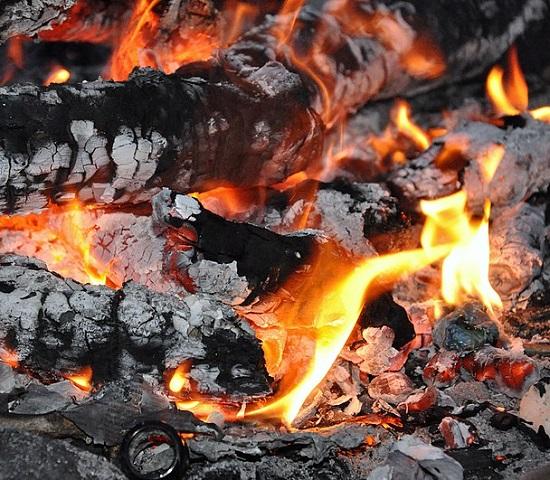Introduction
Fires can be devastating, causing significant damage to property and posing a threat to human life. Among the various types of fires, Class A fires are the most common and can occur in a wide range of settings. Understanding the characteristics of Class A fires and knowing how to extinguish them effectively is crucial for ensuring safety in homes, workplaces, and public spaces. In this article, we will explore the nature of Class A fires, the best fire extinguishers to use, and the techniques for extinguishing them safely.
What is a Class A Fire?
Class A fires involve ordinary combustible materials, such as wood, paper, fabric, and some plastics. These fires typically occur when a heat source comes into contact with these materials, causing them to ignite and burn. The characteristics of Class A fires include a steady flame that produces a significant amount of smoke and ash. These fires can spread rapidly if not addressed promptly, making it essential to act quickly and use the appropriate fire extinguisher to prevent further damage and potential harm.
Fire Extinguisher Classes
Fire extinguishers are classified into five main categories based on the type of fire they are designed to combat: Class A, B, C, D, and K. Each class corresponds to a specific type of fire, and using the correct extinguisher is crucial for effectively putting out the fire and minimizing damage.
- Class A extinguishers are designed for ordinary combustible materials, such as wood, paper, and cloth.
- Class B extinguishers are intended for flammable liquids, like gasoline, oil, and grease.
- Class C extinguishers are used for fires involving electrical equipment, such as appliances, wiring, and circuit breakers.
- Class D extinguishers are designed for combustible metals, like magnesium, titanium, and sodium.
- Class K extinguishers are used for fires involving cooking oils and fats, typically found in commercial kitchens.
It is essential to use the appropriate fire extinguisher for the specific type of fire to ensure its effectiveness and prevent further damage or harm.
Best Fire Extinguishers for Class A Fires
There are several types of fire extinguishers that are effective against Class A fires. The most common types include water extinguishers, foam extinguishers, and multipurpose dry chemical powder extinguishers.
- Water extinguishers are the most common and simplest type of fire extinguisher for Class A fires. They work by cooling the burning material and removing the heat needed for the fire to continue. Water extinguishers are typically filled with water and pressurized with air, making them suitable for fires involving ordinary combustible materials like wood, paper, and cloth.
- Foam extinguishers are another effective option for Class A fires. They contain a mixture of water and foam concentrate, which creates a foam blanket when discharged. This foam blanket helps to smother the fire and prevent re-ignition by cooling the burning material and separating it from the oxygen supply.
- Multipurpose dry chemical powder extinguishers are versatile fire extinguishers that can be used on Class A, B, and C fires. They contain a dry chemical powder, usually monoammonium phosphate, which works by interrupting the chemical reaction of the fire and smothering the flames. These extinguishers are suitable for use on ordinary combustible materials, as well as flammable liquids and electrical fires.
When selecting a fire extinguisher for Class A fires, it is essential to choose one that is specifically designed for this type of fire and has been tested and approved by recognized organizations, such as Underwriters Laboratories (UL) or Factory Mutual (FM).
How to Use a Fire Extinguisher on Class A Fires
Using a fire extinguisher on Class A fires requires following proper safety procedures and ensuring that the correct extinguisher type is used. Here is a step-by-step guide on how to use a fire extinguisher on Class A fires:
- Assess the situation: Before attempting to extinguish the fire, ensure that it is safe to do so. If the fire is too large or out of control, evacuate the area and call the fire department.
- Choose the appropriate extinguisher: Select a fire extinguisher that is specifically designed for Class A fires, such as a water, foam, or multipurpose dry chemical powder extinguisher.
- Activate the fire alarm: If the fire alarm has not been activated, pull the nearest fire alarm to alert others in the building.
- Follow the PASS method: To use the fire extinguisher, remember the acronym PASS:
- Pull the pin: Remove the safety pin from the extinguisher’s handle.
- Aim the nozzle: Point the extinguisher nozzle at the base of the fire.
- Squeeze the handle: Squeeze the extinguisher handle to release the extinguishing agent.
- Sweep side to side: Move the nozzle from side to side, covering the entire area of the fire until it is extinguished.
- Monitor the area: After the fire is extinguished, continue to monitor the area for any signs of re-ignition. If the fire re-ignites, use the extinguisher again or evacuate if it becomes unsafe.
Preventing Class A Fires
Preventing Class A fires involves taking proactive measures to minimize the risk of fires starting and spreading. Some key steps to prevent Class A fires include:
- Proper storage and disposal of combustible materials, such as paper, wood, and fabric.
- Enforcing no-smoking rules in designated areas and providing designated smoking areas with proper receptacles for cigarette disposal.
- Keeping rubbish and waste materials away from buildings and ensuring regular collection and disposal.
- Installing and maintaining smoke detectors and fire alarms in homes and workplaces.
- Conducting regular fire safety inspections and training for employees and occupants.
Conclusion
Understanding Class A fires and their characteristics is essential for ensuring safety in homes, workplaces, and public spaces. By using the appropriate fire extinguishers and techniques, these fires can be effectively extinguished, minimizing damage and potential harm. Additionally, implementing fire safety and prevention measures can help reduce the risk of Class A fires occurring in the first place. By staying informed and prepared, we can all contribute to a safer environment and protect ourselves and others from the dangers of fires.
Ready to Take the Next Step in Fire Safety?
Understanding Class A fires is just the tip of the iceberg when it comes to being truly prepared for fire emergencies. As we’ve outlined, different classes of fires require different types of fire extinguishers and methods for effective extinguishing. But how confident are you that you can apply this knowledge under pressure? It’s one thing to know the theory; it’s another entirely to act swiftly and decisively when seconds count.
If you’re committed to not just understanding but mastering fire safety, we have the perfect next step for you. Elevate your preparedness with our comprehensive online training program that covers everything you need to know—and more.
🔥 Stop Playing With Fire: Master the Art of Fire Safety with Our Comprehensive Online Training! 🔥
Imagine it’s a typical Tuesday afternoon, and you suddenly smell smoke. Panic surges through the office. You have mere seconds to react. Are you prepared?
More than a million fire emergencies are reported every year. In most cases, the first responders aren’t firefighters; they’re employees like you. So, what separates a hero from a bystander? Knowledge and Preparedness.
Here’s What Sets Our Training Apart:
🔥 Micro-Learning Modules: Can’t commit hours at a stretch? Our bite-sized 3-5 minute courses get right to the point, making learning manageable and memorable.
🔥 Comprehensive Coverage: From “How Fires Burn” to “Maintaining Fire Extinguishers,” we leave no stone unturned.
🔥 Multi-Lingual Support: Because fire safety is universal, all our products are available in both English and Spanish.
Key Topics You’ll Master:
- How Fires Burn: Understand the science to tackle the problem at its root.
- Classes of Fires: Not all fires are the same. Learn to identify and fight them effectively.
- Types of Extinguishers: Dry chemical, carbon dioxide, water, foam—know when to use what.
- How to Use a Fire Extinguisher: Get hands-on knowledge to act swiftly and safely.
- Maintenance: A malfunctioning extinguisher is a tragedy waiting to happen. Learn how to keep yours in top condition.
Don’t just be another statistic; be the one who makes a difference. Equip yourself with the power of knowledge and turn a potential catastrophe into a manageable situation.
For a taste of what’s to come, click the link below for a free demo.
Be the hero your workplace needs. Enroll today.
🔥 Ready to become fireproof? 🔥
Engage with our training now and secure your peace of mind for tomorrow.
Sources:
- Wikipedia – Fire Class: Wikipedia – Fire Class
- NFPA – Fire Extinguisher Types: NFPA – Fire Extinguisher Types
- Safeopedia – Class A Fire Definition: Safeopedia – Class A Fire Definition
- Nationwide – Types of Fire Extinguisher Classes & Safety Tips: Nationwide – Types of Fire Extinguisher Classes & Safety Tips
- UCLA Health – Classes of Fires & Fire Extinguishers: UCLA Health – Classes of Fires & Fire Extinguishers
- Vanguard – 5 Types of Fire Extinguishers: Vanguard – 5 Types of Fire Extinguishers
- Vanguard – 5 Different Classes of Fires: Vanguard – 5 Different Classes of Fires
- Lafayette, IN – Fire Extinguisher Classification: Lafayette, IN – Fire Extinguisher Classification
- Law Insider – Class A Fire Definition: Law Insider – Class A Fire Definition
- Occupational Health & Safety – The ABCs, Ds, and Ks of Fire Extinguishers: Occupational Health & Safety – The ABCs, Ds, and Ks of Fire Extinguishers
- UT Austin Fire Prevention Services – ABCs of Fire Extinguishers: UT Austin Fire Prevention Services – ABCs of Fire Extinguishers
- Fire Protection Online – What Is a Class A Fire?: Fire Protection Online – What Is a Class A Fire?
- Groundworks – Fire Resistance: Class A Fire Rating: Groundworks – Fire Resistance: Class A Fire Rating
- Image reference: https://commons.wikimedia.org/wiki/File:Wood_fire_closeup_(3837206924).jpg


